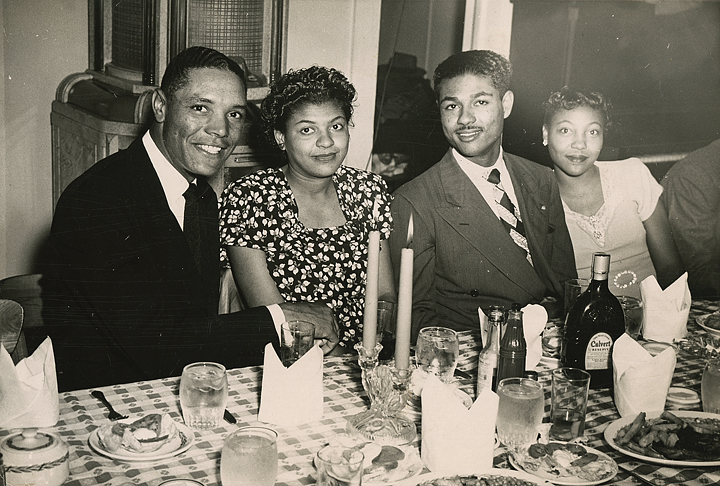Whites and blacks engaged in similar activities, separately, is the thrust of a new exhibit of photographs at the Cape Fear Museum of History. Curator Jan Davidson sees it as a slice of American history bracketing the closeout of World War II before 1968.
“I wanted to use the close of Williston as an end marker, and then post World War II, with the desegregation of the Armed Forces coming up in the ’40s, it seemed like — if you think of the long Civil Rights Movement, many people count the Pullman porter guys’ march on Washington, it’s not just Rosa Parks sitting down on a bus in the 1950s — there is this long span of political and cultural activity,” Davidson said during a walk through of the exhibit Monday, June 1.
Davidson, who will guide a tour of the upstairs installation at 2 p.m. Sunday, June 7, combed through the museum’s collection of more than 10,000 images to distill that slice of Americana even further.
Among the photographers featured are the African-American U.S. Postal Service employee Herbert Howard, James Walker Memorial Hospital nurse trainee Elizabeth Ashworth (1945-1948), artist Claude Howell, and unnamed photographers whose pictures and negatives were left unclaimed at a downtown Wilmington, N.C., camera shop.
In 2001, Ashworth donated 500 photos and her scrapbooks to the museum’s archives.
A lot of Ashworth’s photos, Davidson said, portray women in nurses’ uniforms along with some operating room images. Others capture the nurses “mucking around in their dorm rooms and being goofy,” she said. “I really like them and thought they would be interesting to look at in context with Herbert Howard, because it’s a whites-only school at that point. She’s being trained to be a nurse in this cadre of young white women.”
While the Cameron Art Museum is a repository for Howell’s original artwork and journals, the Cape Fear Museum houses his meticulously curated scrapbooks.
“Claude Howell is so iconic for this period and also for this town,” Davidson said. “He kept everything: receipts from the railroad paying him, his rejection letters from galleries, he kept postcards he bought from MoMA (the Museum of Modern Art) and France — and everywhere he went for art inspiration — and then he pasted on these black pages … photos and most of them are him and his friends drinking and hanging out. … He wrote: ‘Wits End is kind of like a clubhouse.’”
In spite of living in a whites-only world, Howell received a Rosenwald grant to study African-American dockworkers. This dichotomy is the inspiration for Davidson’s choices, echoed in the wall of unidentified subjects of some 150 unclaimed envelopes of photographic prints and negatives from the 1980s. Harkening back to the decades during which rolls of film were dropped off at camera shops for processing, students and devotees of photography, amateur and professional, are invited to examine a selection of envelopes reproduced for the exhibit.
“We wanted people to have the experience of going to the camera shop. … You didn’t know what you were going to get when you went to pick it up,” Davidson said.
Others who may recognize individual people are invited to identify the subjects.
When complete, the exhibition will include a photo booth. Expected to remain on view for one year or more, “Reflections in Black and White” ushers a series of photography exhibits influenced by Civil Rights, including “For All the World to See,” a traveling exhibition funded by the National Endowment for the Humanities that illustrates the role of the media and manufacturing in defining black culture.
Expected to arrive in Wilmington in November, the exhibit will feature images of Aunt Jemima syrup bottles and the open coffin photo, originally published by Jet Magazine, of 14-year-old Emmett Till, the Chicago, Ill., youth who was brutally beaten and lynched in Money, Miss., in 1955 for openly flirting with a white woman.
Another exhibit, planned for 2017, “Changing America,” observes the 1863 Emancipation Proclamation to the 1963 March on Washington.
New Hanover County residents who wish to attend Davidson’s June 7 talk are admitted free.
email [email protected]




